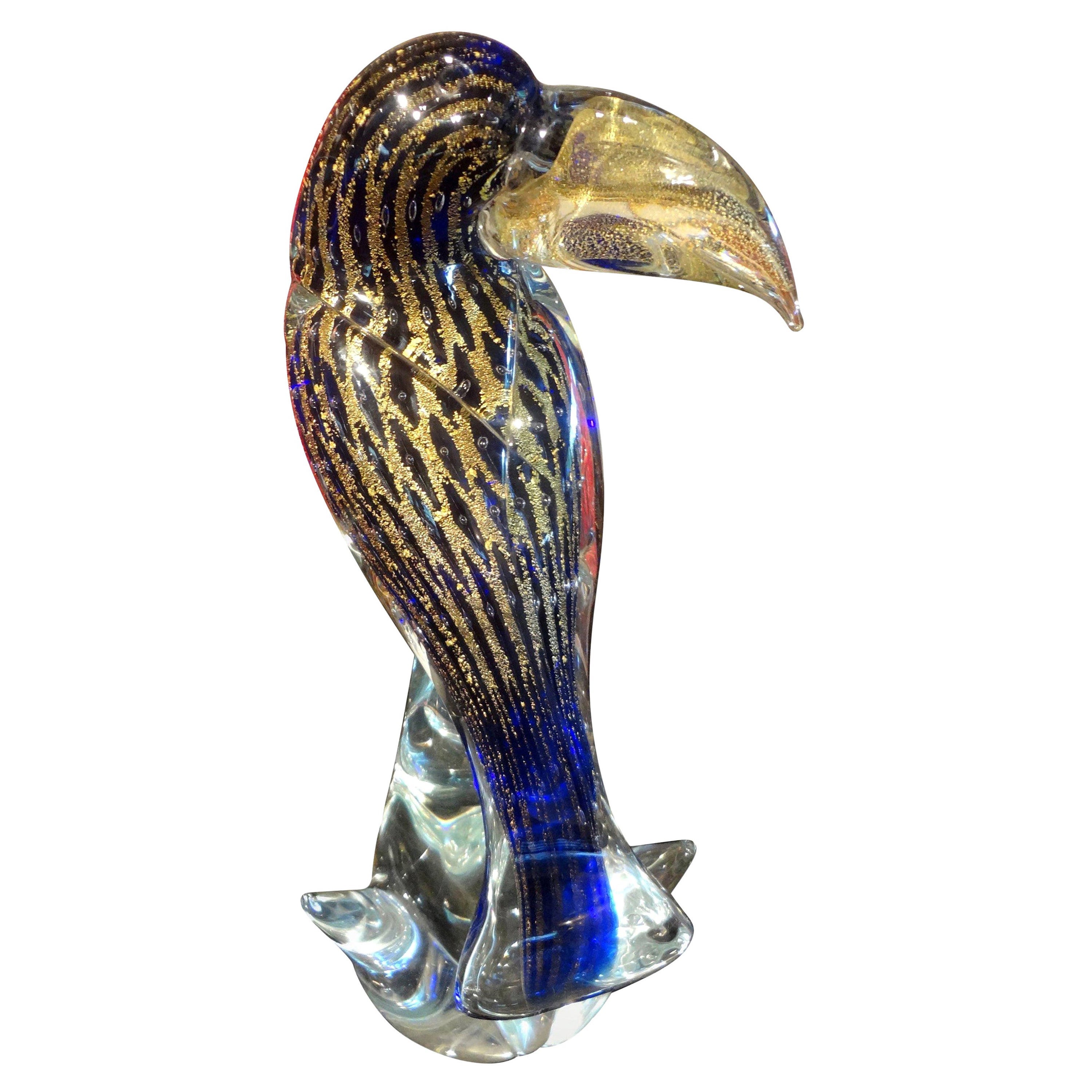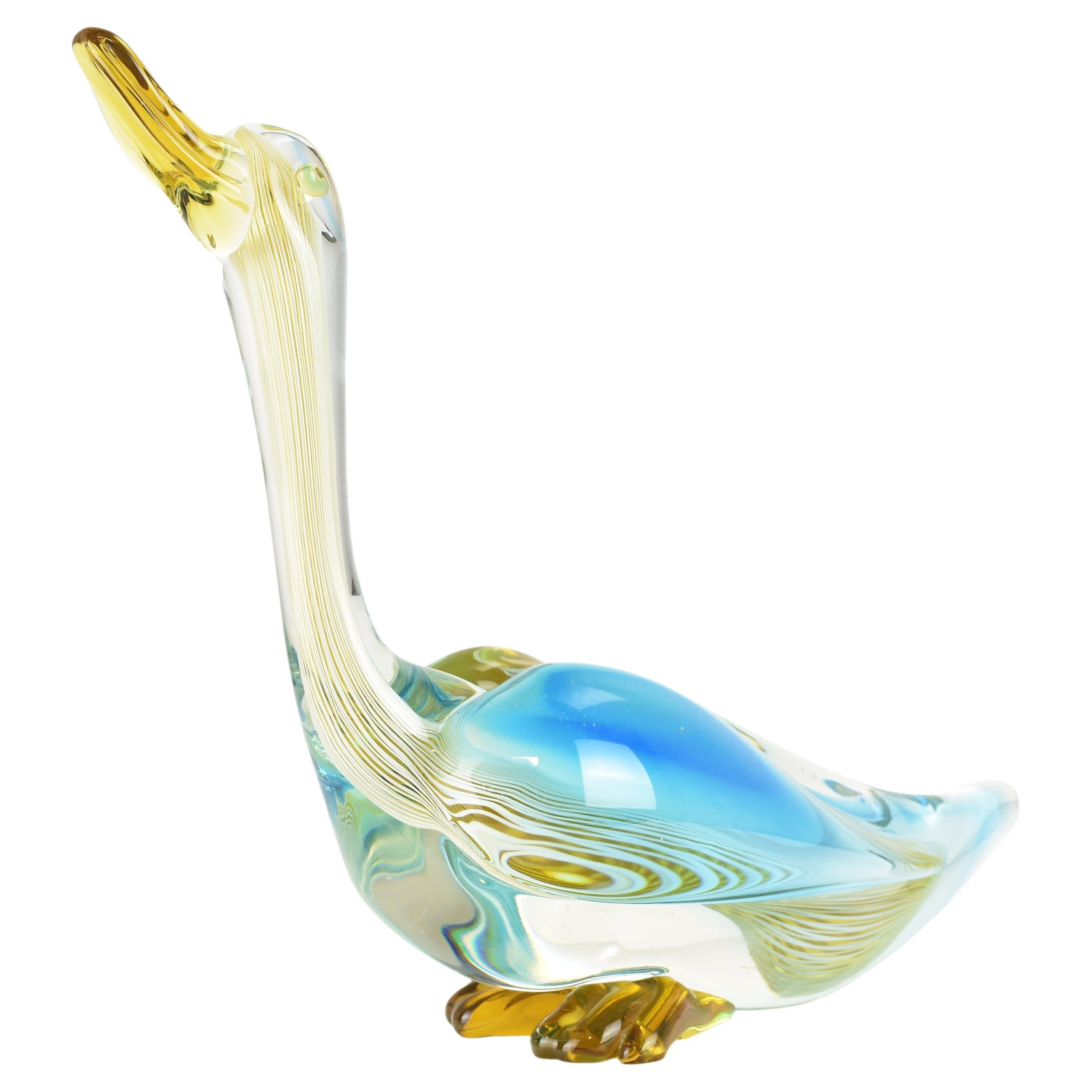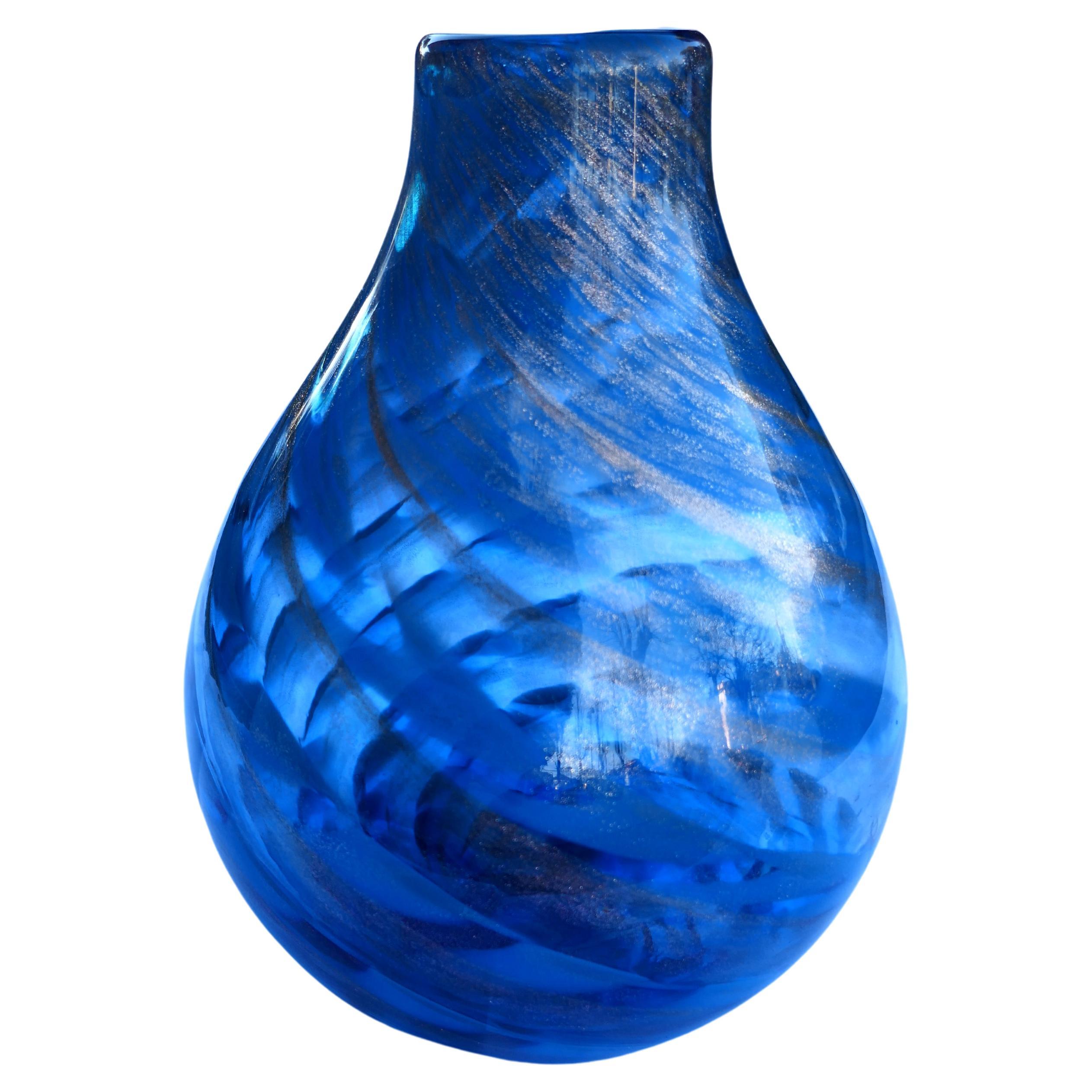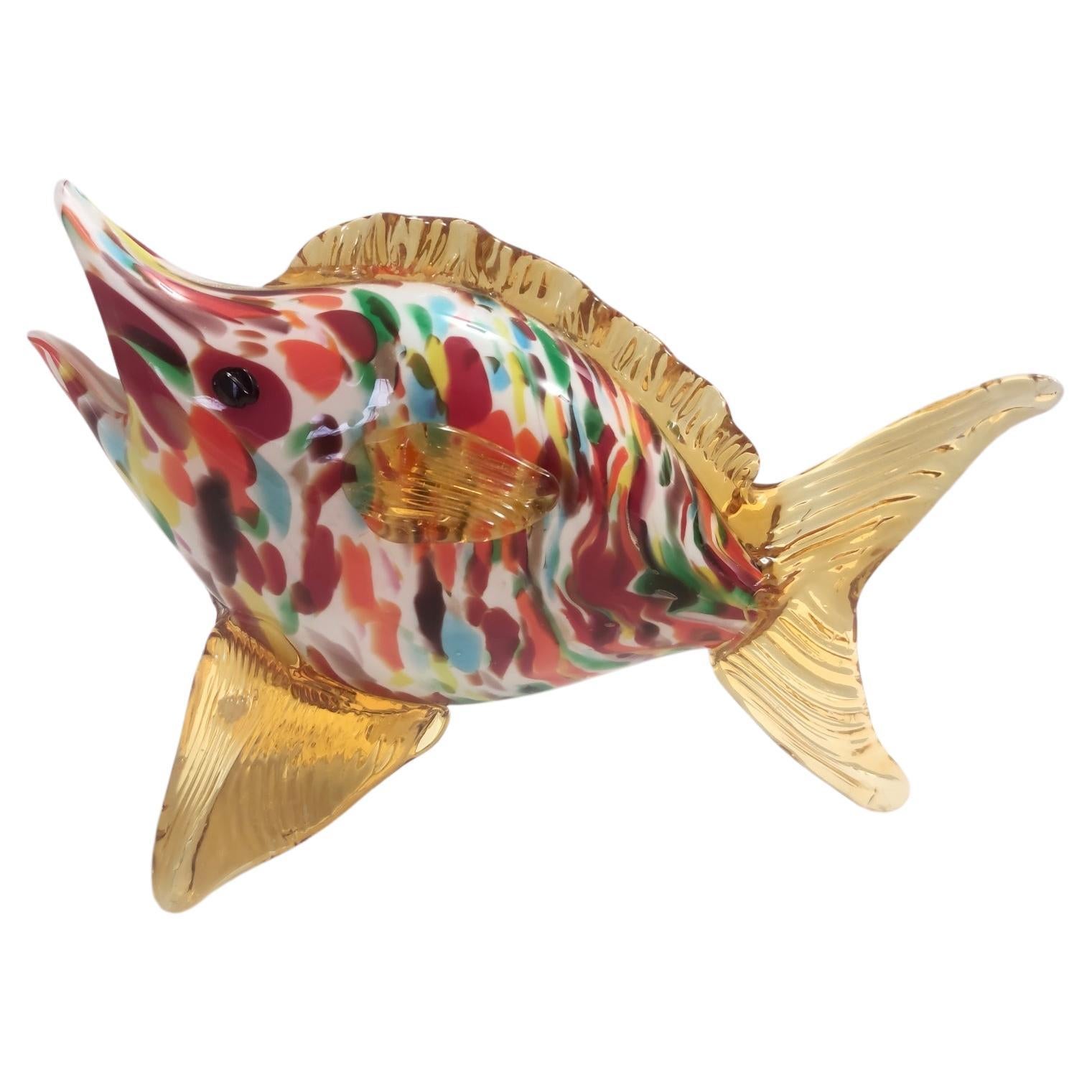Items Similar to Pair of Murano Glass Ducks by Fratelli
Want more images or videos?
Request additional images or videos from the seller
1 of 14
Pair of Murano Glass Ducks by Fratelli
About the Item
Pair of Murano glass ducks by Fratelli.
Beautiful pair of gold murano glass ducks by Fratelli. This lovely pair of murano glass ducks are a gold glass loaded with beautiful gold flecks. This pair of ducks retain what's left of the original label, (see photos).
- Creator:Fratelli Toso (Maker),Fratelli (Maker)
- Similar to:Barovier (Maker)Salviati (Maker)Seguso (Maker)
- Dimensions:Height: 6 in (15.24 cm)Width: 7.13 in (18.12 cm)Depth: 3.25 in (8.26 cm)
- Sold As:Set of 2
- Style:Hollywood Regency (Of the Period)
- Materials and Techniques:
- Place of Origin:
- Period:
- Date of Manufacture:1940s
- Condition:Wear consistent with age and use. Minor rough spot on edge of base of one of the ducks.
- Seller Location:Houston, TX
- Reference Number:
About the Seller
5.0
Vetted Seller
These experienced sellers undergo a comprehensive evaluation by our team of in-house experts.
Established in 1990
1stDibs seller since 2009
579 sales on 1stDibs
Typical response time: <1 hour
- ShippingRetrieving quote...Ships From: Houston, TX
- Return PolicyThis item cannot be returned.
More From This SellerView All
- Pair of Murano Glass FlamingosBy Salviati, Barovier&Toso, Seguso, Ercole Barovier, BarovierLocated in Houston, TXPair of Murano Glass Flamingos Stunning pair of lavender Murano glass flamingo sculptures. This beautiful vintage pair of Italian Murano flamingos in ...Category
Vintage 1950s Italian Hollywood Regency Animal Sculptures
MaterialsBlown Glass, Murano Glass
- Large Pair Of Murano Glass Cockatiels Or ParrotsBy Salviati, Barovier&Toso, Barovier, Venini, SegusoLocated in Houston, TXLarge Pair Of Murano Glass Cockatiels Or Parrots. This lovely pair of Murano glass cockatiels, parrots or birds were executed in several colors with internal gold inclusions with att...Category
Vintage 1960s Italian Hollywood Regency Animal Sculptures
MaterialsBlown Glass, Murano Glass
- Vintage Murano Glass Figure of a ToucanBy Barovier, Barbini, Salviati, Venini, SegusoLocated in Houston, TXVintage Murano glass figure of a Toucan. Gorgeous 20th century hand blown Murano glass figure of a toucan. This beautiful finely detailed Murano toucan ...Category
Vintage 1950s Italian Hollywood Regency Animal Sculptures
MaterialsBlown Glass, Murano Glass
- Large Murano Glass Lamp by SegusoBy Barovier, Salviati, Venini, SegusoLocated in Houston, TXLarge Murano Glass Lamp By Seguso. This stunning Postmodern Murano lamp is the most beautiful green and gold glass on a giltwood base. Our lovely Hollywood Regency Murano lamp has be...Category
Vintage 1970s Italian Hollywood Regency Table Lamps
MaterialsBlown Glass, Murano Glass
- Large Gold Murano Glass Lamp by BarovierBy Salviati, Barovier&Toso, Venini, Barovier, SegusoLocated in Houston, TXLarge gold Murano glass lamp by Barovier. Large and heavy gold Murano lamp by Barovier with infused gold on lucite base. This Italian Hollywood Regency lamp...Category
Late 20th Century Italian Hollywood Regency Table Lamps
MaterialsLucite, Blown Glass, Murano Glass
- Vintage Murano Glass Floor Lamp by BarovierBy Salviati, Seguso, Ercole Barovier, Barovier, VeniniLocated in Houston, TXVintage murano glass floor lamp by Barovier. This stunning tall murano glass lamp is comprised of both clear and lightly gold infused g...Category
Vintage 1960s Italian Hollywood Regency Floor Lamps
MaterialsBlown Glass, Murano Glass
You May Also Like
- Large Scale Vintage Murano Glass Duck Bird Figurine Sculpture Dino MartensBy Fratelli Toso, Venini, Barovier, Dino Martens, SegusoLocated in Bad Säckingen, DEThis is a large, massive duck sculpture from the 1950s made in the Sommerso and mezza filigrana technique. It is a decorative piece and was likely designed by Dino Martens for Fratel...Category
Vintage 1950s Italian Mid-Century Modern Animal Sculptures
MaterialsGlass, Art Glass, Blown Glass
- Fratelli Toso Glass VaseBy Venini, Barovier, Seguso, Vintage Murano Gallery, Fratelli TosoLocated in Lugo, ITPerfect glass vase by Fratelli Toso Thank youCategory
Vintage 1950s Italian Modern Vases
MaterialsMurano Glass
- Vintage Multicolored Murano Glass Fish Decorative Figurine by Fratelli TosoBy Fratelli TosoLocated in Bresso, LombardyMurano, Italy, 1950s. This fish is made in polychromed encased hand-blown Murano glass with fins that are made in amber colored hand-modeled glass. It is a vintage piece, therefore...Category
Vintage 1950s Italian Mid-Century Modern Animal Sculptures
MaterialsMurano Glass
- Vintage Murano Glass Fish Decorative Figurine by Fratelli Toso, ItalyBy Fratelli TosoLocated in Bresso, LombardyMurano, Italy, 1950s. This fish is made in polychromed hand-blown Murano glass. It is a vintage piece, therefore it might show slight traces of use, but it can be considered as in p...Category
Vintage 1950s Italian Mid-Century Modern Animal Sculptures
MaterialsMurano Glass
- Ducks Murano, 1930, Italian, Sing Salviati & CBy SalviatiLocated in Ciudad Autónoma Buenos Aires, CMurano We have specialized in the sale of Art Deco and Art Nouveau and Vintage styles since 1982. If you have any questions we are at your disposal. Pushing the button that reads 'View All From Seller'. And you can see more objects to the style for sale. Salviati & C Measures: Violet : 33 long x 10 high x 5.5 depth Green: 30 long x 9 high x 5.5 depth The lawyer Antonio Salviati and his dream In 1859 in his premises at Number 731 of Dorsoduro, Venice the “Salviati Dott. Antonio fu Bartolomeo” company was established. This is when, Vicenza-born lawyer Antonio Salviati started the entrepreneurial career, moved by a passion for the precious mosaics of the Basilica of San Marco and fascinated by Murano glass art, he decided to start-up his own production of mosaics and objects in Murano glass. An ambitious and far-sighted goal pushed him along this path: to revive the fate of Murano glass production that has been fallen for decades. A challenge which finds the maximum support from two fundamental figures in the history of Murano glass: the mayor of the island, Antonio Colleoni, and the Abbot Vincenzo Zanetti, founder of the glass museum and of the first art school for glass masters. The first successes and international investments The launchpad was the “First Glassmakers’ Exhibition” in 1864 in which Salviati participated with a monumental mosaic that earns him a prize superior to the Gold Medal. The success achieved affirmed the credibility of the Company which thus started its glass production in Palazzo da Mula. The new corporate and productive reality needed investors and the lawyer started to internationalise the company by addressing the economic and financial market across the Channel. The UK immediately showed huge interest in Salviati’s mosaics – as testified by the mosaic that can be seen on the façade of the current Apple Store in Regent Street, London. It was also in London, on 21st December 1866, that the “Società Anonima per Azioni Salviati & C.” was established with the support of diplomat Sir Austen Henry Layard and historian William Drake. The new corporate set-up was further established with the purchase of a new headquarter, this time on the Riva dei Vetrai in Murano. The universal show of Paris in 1867 celebrated the relaunch project of Antonio Salviati “Venice owes a debt of gratitude to the knight Salviati in the resurgence for one of the most legitimately famous of its industries”. From Esposizione Illustrata di Parigi, 1867 pg. 275. “Venice and Italy have gain huge success in the Universal Exhibition. The resurgence of one of the city’s most famous industries is consecrated in this very occasion by the gold medal awarded by the jury to Mr Salviati […] the crowd […] is gathering around the display cases that hold those pieces of glass that are so transparent and so light as to appear like woven air, impregnated, when in their elegant forms that become rainbows of those iridescent reflections that cover them at the artist’s whim – the author of a real ray of sunshine from the beautiful and splendid Venice”. From Esposizione Illustrata di Parigi, 1867 pg. 311 The fundamental role of training in murano glass Training plays a fundamental role for the Company; attendance at the Art School was made compulsory for “[…] all the young workers of the Factory who don’t only tire themselves in manual work. This was established with the idea not only to lift their dignity and their initially limited aspirations, […] but also to improve their artistic education and thereby facilitate an improvement also in their economic situation”. Together with the art school, a free school was also set up to teach all employees to read and write. Diversification in production and made-to-measure projects In a short time, Salviati & C. diversified its production to include glasses, cups, amphoras, and vials which guaranteed the first prize in the universal exhibition for three consecutive years. Its mosaic production also flourished, being used in world-class projects: from the Houses of Parliament in London, to the Viceroy’s palace in Alessandria in Egypt, to the Opera House of Paris, including the private homes of wealthy New York personality. The entire 19th century for Salviati & C. was represented by development, success and fame in the national and international markets, and the Company became a symbol and reference point of Murano glass art throughout the world. The Salviati legacy at the turn of the century On the death of Antonio Salviati in 1890, first his three children followed one another at the helm of the company and then Maurizio Camerino, previously general manager. It was thanks to him that the decorative mosaic project of the Stanford Memorial Church in Palo Alto (California, USA) took place after 12 years of work. As well as the opening of a sales point in Via Montenapoleone in Milan and the institution of a museum collection of Murano glass from the 19th and 20th centuries. The post-war years, biennials and lighting After Maurizio Camerino’s death in 1931, his three children took over the helm of the company: its solid foundations allowed them to strive for new important goals in the art world, participating in the Biennials of 1932 and 1934. Not even the Second World War could tarnish the strength of the Salviati brand: in the post-war years Renzo Camerino renewed the ruined production headquarter and enthusiastically restored all his commercial contacts. Thanks to his grandson Renzo Tedeschi (newly graduated in Engineering at the Polytechnic of Turin and upon his return from an apprenticeship in the United States), Salviati launched its production in lighting appliances. The following years saw intense growth in the number of collaborations with renowned artists and designers. In 1959, the production site was moved to Fondamenta Radi 16, where it still stands today. The great lighting projects The larger production area allowed the company to further expand the international market in the field of architectural lighting. A number of projects were undertaken, such as the 9-tonne, 22-metres high chandelier in the Chamber of Commerce in Parma, the ceiling illumination in the premises of the World Intellectual Property Organisation in Geneva and the Kowloon Hotel in Hong Kong; not to mention the sound-absorbing windows of the Aula Nervi in the Vatican and the lighting system of the great honour hall of the Philippine Plaza Hotel in Manila in collaboration with architect John Marsteller. The reputation of Salviati & C. was further affirmed by the commission – after an international call for bids – for twelve 11-metre high chandeliers for the Tonhalle concert hall in Dusseldorf, made using an innovative system of modular glass elements – “LS- System” – one of the today company’s cornerstones. Salviati from the modern age to the present The story of Salviati continues in the modern era, keeping the focus on creating an innovative style that had distinguished it since its inception. Participation in international exhibitions increased, such as the Venice Biennials from 1958 to 1972 (the final year in which Murano glass was allowed) thanks to projects by designers of the calibre of Betha and Teff Sarasin, Claire Falkestein, and Luciano Gaspari. In 1962 Salviati was awarded with the highest recognition in the Design world, the “Compasso d’Oro” prize assigned by A.D.I. for the Marco vase designed by architect Sergio Asti. In 1965 the company changed its name to Salviati & C. s.p.a.; then it was purchased by the Gruppo Ferruzzi in 1987 which later on it was transferred to a French company. Since 2015 the company returned to be Venetian with the acquisition by the Umana group. Salviati and its designers Salviati’s designers: Luciano Gaspari, Sergio Asti (Compasso d’Oro 1962), Claire Falkenstein, Ward Bennet, Teff and Betha Sarasin, Ingo Maurer, Ross Lovegrove, Amanda Levete, Tom Dixon, Nigel Coates, Thomas Heatherwick, Luca Nichetto, Ben Gorham...Category
Vintage 1930s Italian Art Deco Animal Sculptures
MaterialsMurano Glass
- Fratelli Toso Murano Pink Blue Flowers Glass Italian Art Glass PaperweightBy Fratelli TosoLocated in Kissimmee, FLBeautiful vintage Murano hand blown pink mini spots and blue with white stars millefiori flower murrines Italian art glass paperweight. Documented to the Fratelli Toso company. The s...Category
Mid-20th Century Italian Mid-Century Modern Paperweights
MaterialsGlass, Art Glass, Blown Glass, Murano Glass, Murrine
Recently Viewed
View AllMore Ways To Browse
Pair Of Murano
Pair Of Murano Glass
Fratelli Vintage
Murano Fratelli
Pair Of Seguso Murano Glass
Murano Gold Glass Animal
Gold Regency Sculpture
Pair Of Ducks
Toso Murano Sculpture
Barovier Italian Hollywood
Murano Glass Animal Pairs
Murano Glass Ducks
Eagle Detail Furniture
Black Forest Carved Wood Decorative Objects
Feather Wings
Used Recumbent
Mid Century Animal Figurine
1930 Lion





